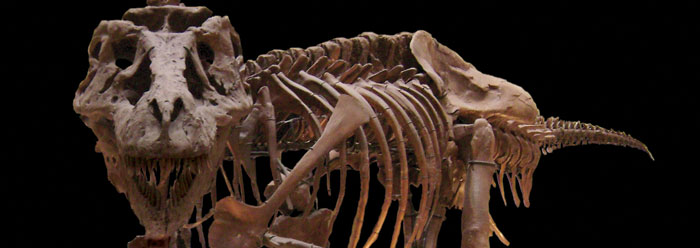Teeth and fossil bone fragments from a meat-eating T. rex-like dinosaur were discovered in a Chinese dinosaur bone bed. The remains indicate that the creature measured over 30 feet from nose to tail.1 How did such a large creature come to be fossilized alongside so many other dinosaurs?
Researchers estimated the dinosaur weighed six tons. Dr. David Hone, now at University College Dublin, studied the fossil remains and was the lead author of the resulting paper published in the journal Cretaceous Research.2 He told The Telegraph, "It's another big T-rex and these things don't turn up every day. It's one of the biggest predators of all time."3
How did this enormous creature…dubbed Zhuchengtyrannus magnus in honor of the city in which it was found…wind up in the Shandong quarry, "one of the largest concentrations of dinosaur bones in the world"?3 In trying to reconstruct the circumstances of this giant creature's death and preservation as a fossil, it stands to reason that if it had died of natural causes in any normal setting, other animals would have quickly scavenged its body. Any leftover tissue would have rotted quickly, just as occurs today. Therefore, whatever happened to it and the hordes of other dinosaurs found jumbled within the same rock formation must have happened quickly―faster than carcasses can rot or be scavenged.
The Telegraph reported, "Research suggests the area contains so many dinosaur fossils because it was a large flood plain where many dinosaur bodies were washed together during floods and fossilised."3 In other words, this creature was catastrophically overtaken by water. But how strong would this flood event have to be? Strong enough to at least be able to sweep away a six-ton animal and then completely bury it with the masses of other dinosaurs whose fossils are within the same area.
This dinosaur bone bed in China appears to be an instance of what Henry Morris termed a "fossil graveyard." He wrote in 1974, "Similar dinosaur graveyards are found on every continent, all over the world. Again the uniformitarian is challenged to point to any such phenomena occurring anywhere in the world today."4
Uniformitarian thinking insists that present slow processes explain all past phenomena. However, since present slow processes do not transport giant creatures in this manner or preserve them as fossils, then certainly catastrophic processes…not gradual ones…are the best explanation for the origin of many earth features. And the Bible records a flood that had enough power to do the kind of work required to totally overpower even the largest land creatures and bury them in fossil graveyards.
References
- Zhuchengtyrannus magnus. Palaeocritti―a guide to prehistoric animals. Posted on palaeocrittic.com, accessed April 5, 2011.
- Hone, D. W. E. et al. A new tyrannosaurine theropod, Zhuchengtyrannus magnus is named based on a maxilla and dentary. Cretaceous Research. Published online before print March 30, 2011.
- T-Rex's cousin found in China. The Telegraph. Posted on telegraph.co.uk April 1, 2011, accessed April 4, 2011.
- Morris, H. 1974. Scientific Creationism. Green Forest, AR: Master Books, 99.
* Mr. Thomas is Science Writer at the Institute for Creation Research.
Article posted on April 8, 2011.




